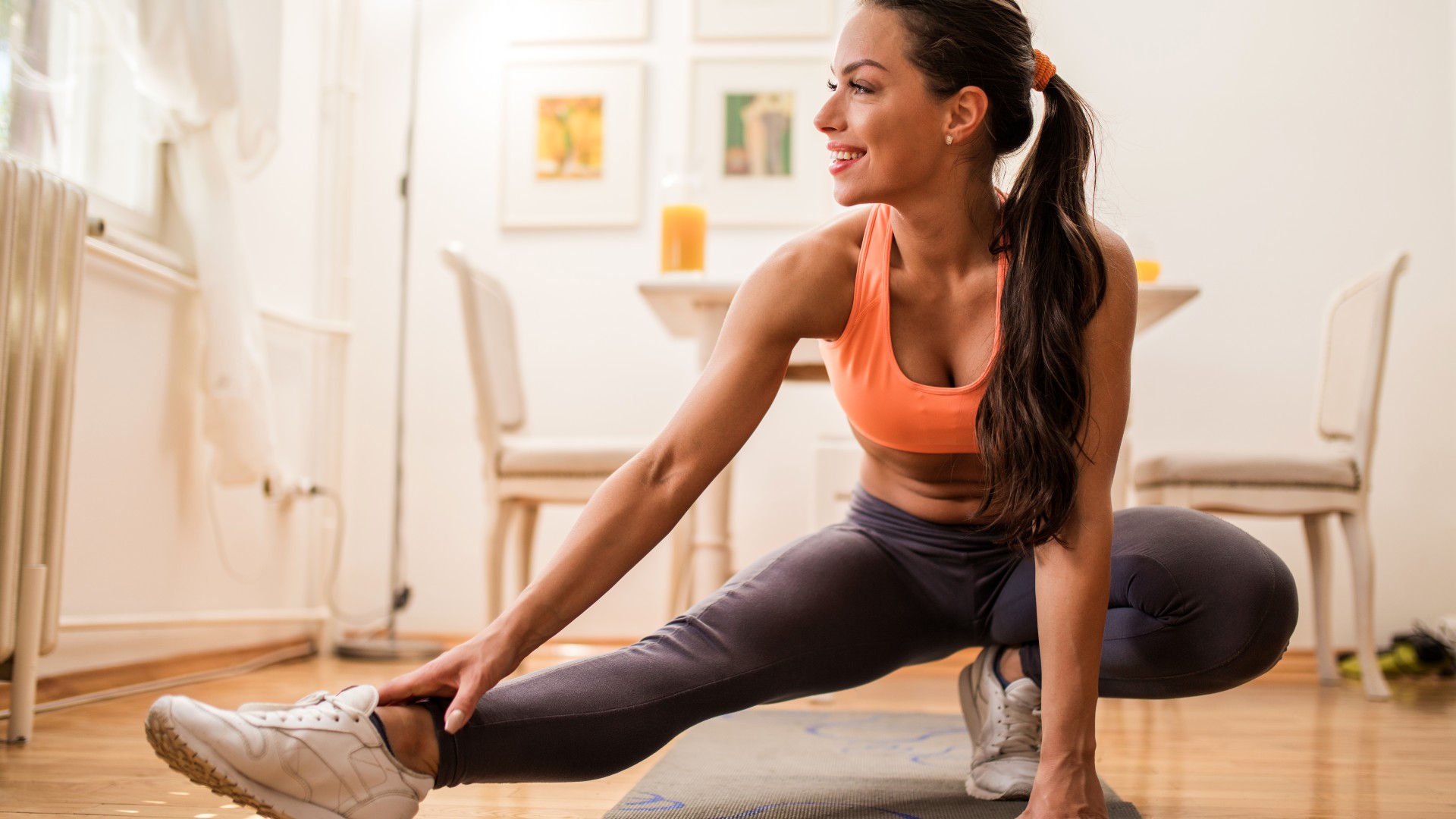
This 10-minute workout builds strong legs without squats or deadlifts and no weights — although I recommend adding a pair of the best adjustable dumbbells to increase the intensity and work your leg muscles harder.
Using her bodyweight lunge workout, Caroline Girvan promises to torch your legs in just 10 minutes. Yep, 10 minutes of lunge variations. But before you hastily close this tab and file the leg workout under ‘nope,’ I promise it’s worth shaky legs. The exercises work your body in different planes of motion — forward, backward, side-to-side, and rotating — to target your gluteal muscles, quads, hamstrings, calves, and hip flexor muscles.
During this short EMOM (every minute on the minute) routine, aim for max reps, starting a new exercise every minute. Girvan encourages you to keep your form tight and pace yourself. If you're new to lunges, Girvan also demonstrates how to nail your form before you begin
For beginners, I recommend learning how to do a lunge before, well, lunging in. The workout starts with diagonal front alternating lunges moving straight into lateral lunges on the next minute — these are similar to Cossak squats except you don’t need to achieve as much depth and it requires less mobility.
You can expect lunge pulses and diagonal crunches to crop up during the leg workout. The latter engages your core, including the obliques and rectus abdominal muscles, which is an excellent addition to getting your abs working, although your core engages to keep you upright and support movement anyway.
Forget squats and deadlifts — watch Caroline Girvan's 10-minute "lunges" leg workout
Girvan regularly shares workouts with her millions of followers, and we’ve tried a few, including this dumbbell workout with 5 million views. But I rarely program an entire lunge workout, so I was intrigued by this one. Although our fitness editor recently completed 100 lunges a day for a week, and one writer tried 30 lateral lunges every day for a week, so Tom’s Guide is hardly a novice to death by lunges.
If your goal is to develop muscle or strength, bodyweight workouts could help. The Strength and Conditioning Journal describes bodyweight training as one way to improve functional strength and mobility using “closed-chain” exercises (movements that use multiple joints as resistance moves away from or toward an anchored body point). However, bodyweight exercises are associated with building relative strength rather than absolute strength (like your one rep max) due to the limited load potential.
Sign up to get the BEST of Tom's Guide direct to your inbox.
Get instant access to breaking news, the hottest reviews, great deals and helpful tips.
If you prefer to work with free weights, grab a set of kettlebells or dumbbells to spice things up. I love training unilaterally by holding or racking one weight on one side of my body to test my coordination and balance and help strengthen my weaker muscles — my left side is noticeably weaker because of a shoulder injury. Research has shown that unilateral training could also improve unilateral sports-based exercise, which isn’t surprising.
It's worth noting that if your goal is to build tone, muscle, and definition in your legs, progressive overload should form part of your training regime. By gradually increasing the reps, weight, or frequency of training, you should notice an increase in strength and muscle mass. I recommend slotting this workout into an existing workout program.
The curtsy lunge can sometimes irritate sore knees. If you suffer from a knee injury, I recommend substituting it with another lunge variation. To reduce the risk of injury, I teach clients to draw a semi-circle with the moving leg. By doing so, you should place the knee in a better position and provide enough space to lower the back knee without lifting the front heel or leaning too far forward. Either way, be prepared for your legs to feel the burn whichever way you lunge at it.
More from Tom's Guide

Sam Hopes is a level 3 qualified trainer, level 2 reiki practitioner and senior fitness writer at Tom's Guide. She is also currently undertaking her Yoga For Athletes training course. Sam has written for various fitness brands and websites over the years and has experience across brands at Future such as Live Science, Fit&Well, Coach, and T3.
Having worked with fitness studios like F45 and Virgin Active, Sam now primarily teaches outdoor bootcamps, bodyweight, calisthenics and kettlebells. She also coaches mobility and stretching-focused classes several times a week and believes that true strength comes from a holistic approach to training your body.
Sam has completed two mixed doubles Hyrox competitions in London and the Netherlands and finished her first doubles attempt in 1:11.

